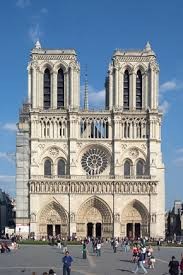Fibonacci discovered a numeral sequence that is frequently found in nature and believed that it was significant as it could be seen in many aspects of nature. The Fibonacci sequence is: 1,1,2,3,5,8,13,21,34…. The sequence is continued by adding together the two previous numbers to get the next number in the sequence. This sequence creates a Golden Spiral which can be seen in flowers and in waves. This spiral is made from the numbers within the Fibonacci sequence. The Golden number of 1.6 can be found by dividing two numbers in the sequence, for example 3/2 or 21/13. As this exists in nature, the Greeks used this ratio in architecture for beauty and balance. The Golden Ratio was used to design the Notre Dame in Paris. This topic for teaching in a classroom is relevant as children can go out and explore this concept in the wider community and it will have relevance to them.
Olsen. S, (2009) The Golden Section Nature’s Greatest Secret. Somerset: Wooden Books Ltd.






